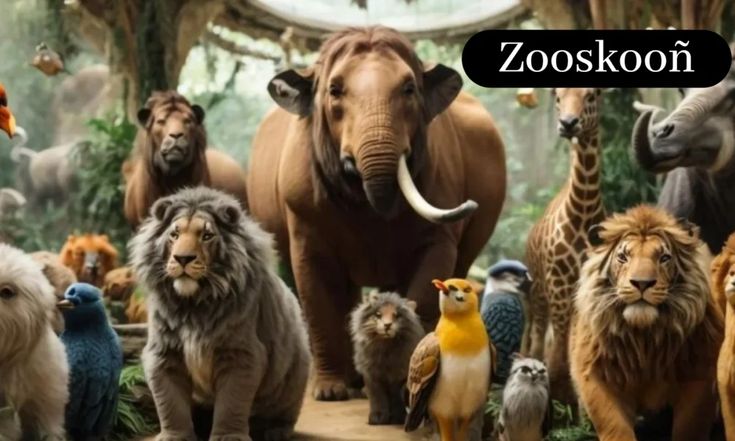Introduction
In a world rapidly evolving at the crossroads of technology, environment, and human consciousness, a curious term has emerged — Zooskooñ. Pronounced “zoo-skohn”, it carries a rich tapestry of meanings depending on the context. While its etymological roots remain ambiguous, Zooskooñ has come to represent a multi-dimensional concept — a fusion of ecological intelligence, digital innovation, and social transformation.
At its core, Zooskooñ is an interdisciplinary movement and philosophy — one that celebrates harmony between nature, technology, and the human spirit. This article explores the meaning, origins, applications, and implications of Zooskooñ across sectors such as sustainability, education, art, design, and future-facing technologies.
The Origins of Zooskooñ
Although there’s no widely accepted linguistic origin of the word “Zooskooñ”, some theorists suggest it stems from an amalgamation of Greek and Basque elements — “zoo” (life or animal), “sko” (possibly derived from “skopein” meaning to look or observe), and the suffix “ooñ” (which in Basque-like constructions implies motion or evolution). Thus, Zooskooñ may loosely translate to “evolution through the observation of life” or “life-aware movement.”
In more poetic interpretations, Zooskooñ is regarded as a meta-concept, often used in avant-garde circles to describe the shift toward systems thinking, biocentric innovation, and emotionally intelligent design frameworks.
Zooskooñ as a Cultural-Tech Movement
As a cultural-tech movement, Zooskooñ blends tradition and innovation. Its philosophy promotes digital minimalism, ethical AI development, and post-anthropocentric design — a conscious detour from hyper-consumerism and mechanistic thinking.
Key Characteristics of the Zooskooñ Movement:
- Eco-centric Systems Thinking: Prioritizing the planet’s needs in every development cycle.
- Biophilic Technology: Designing digital tools that mimic or enhance natural processes.
- Ethical Design Principles: Advocating for humane interfaces and conscious data use.
- Mindful Integration: Encouraging users to form healthier relationships with digital ecosystems.
- Rewilding Urban Futures: Integrating nature into cities through urban forests, permaculture, and sensory public spaces.
Zooskooñ in Architecture and Urban Design
One of the most visible applications of Zooskooñ philosophy is in architecture and urban planning. Architects inspired by Zooskooñ principles aim to create environments that are alive, adaptive, and regenerative.
Key Practices:
- Living Walls and Rooftop Ecosystems
- Passive Energy Design that responds to environmental cues
- Bio-reactive Surfaces that change based on pollution levels or light intensity
- Community-centric Spaces that foster emotional and sensory well-being
Zooskooñ structures are not just buildings — they are interactive biospheres, integrating climate tech, indigenous knowledge systems, and next-gen materials like mushroom-based mycelium bricks or algae bioglass.
Education: The Zooskooñ Curriculum
Traditional education models often focus on linear thinking and outdated content delivery. Zooskooñ-inspired pedagogy challenges this by introducing non-linear learning, experiential modules, and multi-sensory engagement.
The Zooskooñ Approach to Learning:
- Transdisciplinary Learning: Connecting art, biology, ethics, and coding into one fluid curriculum.
- Eco-emotional Intelligence: Teaching students to sense, feel, and respond to environmental dynamics.
- Storytelling and Systems Narratives: Using indigenous lore, speculative fiction, and science to co-imagine futures.
- Digital-Nature Balance: Incorporating outdoor classrooms, augmented ecological games, and mindfulness routines.
Education in a Zooskooñ world prepares students to think holistically, live responsibly, and innovate regeneratively.
Zooskooñ and Technology: Symbiosis, Not Domination
In a typical tech-driven world, innovation often comes at the cost of environmental degradation or human detachment. Zooskooñ-inspired technologies are built around symbiosis, rather than domination.
Some Notable Zooskooñ Tech Concepts:
- Sentient Sensors: Devices that not only monitor but emotionally respond to ecological changes.
- Conscious Coding Practices: Algorithms designed with ethical bias checkers, transparency layers, and emotional accountability.
- Biomimetic Interfaces: Touch and voice systems designed to mimic the organic behavior of plants or animals.
- Digital Savasana: Restful tech breaks where screens breathe, sleep, or become ambient to protect the user’s mental state.
In this framework, technology becomes a co-evolving organism — not a tool of exploitation but a steward of life.
Zooskooñ in Art and Aesthetic Culture
In the creative domains, Zooskooñ has inspired a fresh wave of art that blurs boundaries between nature, machine, myth, and memory. Artists following the Zooskooñ ethos create immersive, multisensory installations, using elements like water, scent, sound, AI-generated poetry, and biodegradable materials.
Emerging Art Trends in Zooskooñ Culture:
- Bio-Interactive Installations: Art that changes based on viewers’ breath, heart rate, or voice tone.
- Decentralized Art Collectives: Using blockchain to democratize creative ownership and value distribution.
- Slow Art Practices: Encouraging deeper engagement and slowness as resistance to hyper-speed digital culture.
- Myth-Tech Fusion: Merging ancient storytelling traditions with holography and neural soundscapes.
Zooskooñ art is not meant to decorate — it is designed to provoke reflection, shift perception, and activate ecological empathy.
Zooskooñ and Ecological Philosophy
At its deepest level, Zooskooñ represents a new ecological consciousness — one that views humans not as rulers of the planet, but participants in a larger symphony of life.
Core Tenets of Zooskooñ Ecology:
- Inter-being: All beings, sentient and non-sentient, are interconnected in spirit and survival.
- Circular Regeneration: Waste equals nourishment; every system must be regenerative by default.
- Planetary Grief Processing: Allowing space for emotional processing of ecological loss — rituals, art, and community mourning.
- Microbiome Intelligence: Acknowledging the intelligence of soil, fungi, and bacteria as critical life systems.
Zooskooñ ecology isn’t just science — it’s a way of being, sensing, and co-creating with nature.
Zooskooñ and the Future
As we venture deeper into the Anthropocene, the need for alternative frameworks becomes urgent. Zooskooñ offers a gentle yet radical alternative to extractive capitalism and disconnected digital life.
Future Applications of Zooskooñ Philosophy:
- Zooskooñ Governance Models: Participatory democracy infused with ecosystem intelligence.
- Zooskooñ Certification Systems: For products, architecture, software, or media that adhere to regenerative and ethical standards.
- Zooskooñ Economies: Value systems based on symbiotic exchange, time-banking, and biomaterial currencies.
- Zooskooñ Virtual Worlds: Eco-contemplative metaverses for healing, learning, and bio-exploration.
If successful, Zooskooñ could help societies redefine success — not as domination or speed, but as coherence, vitality, and beauty.
Conclusion: Zooskooñ is Not a Trend — It’s a Tuning
Zooskooñ is more than a philosophy or design language — it is a tuning fork for the future. In a world fragmented by polarization and overwhelmed by technological acceleration, Zooskooñ whispers a quiet call: return to presence, regenerate what you touch, and honor the intelligence of all lifeforms.
Whether adopted in architecture, education, art, tech, or daily life, the Zooskooñ spirit could become a guiding pulse toward a more symbiotic civilization — one that thrives not in separation, but in soulful interconnection.

